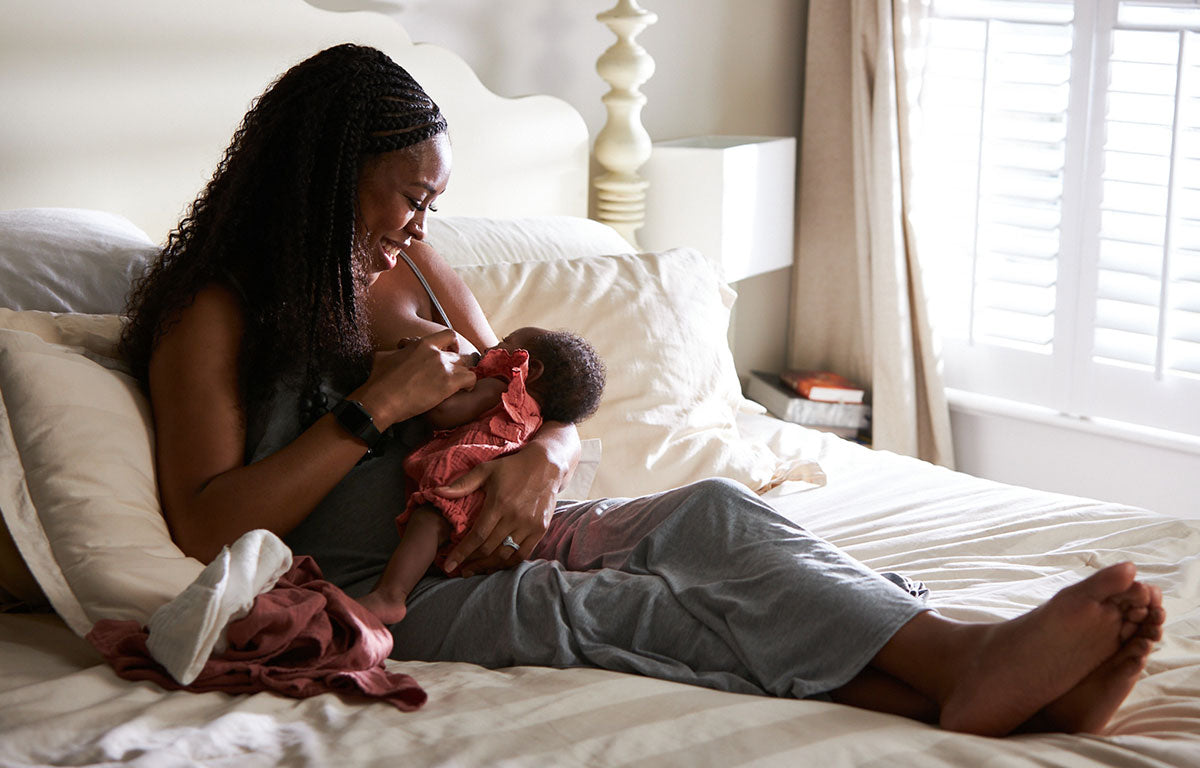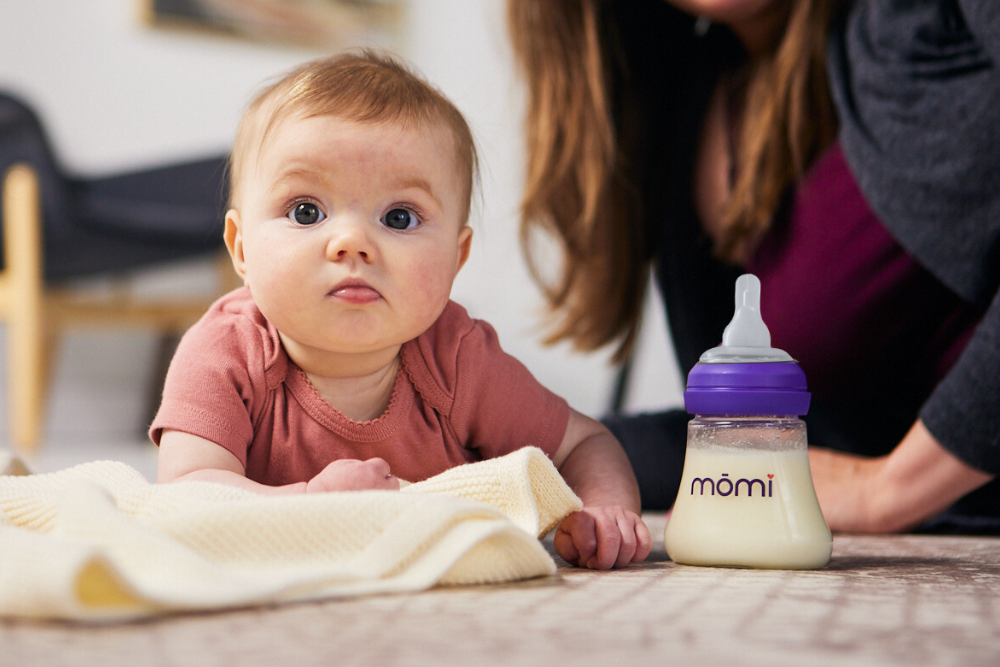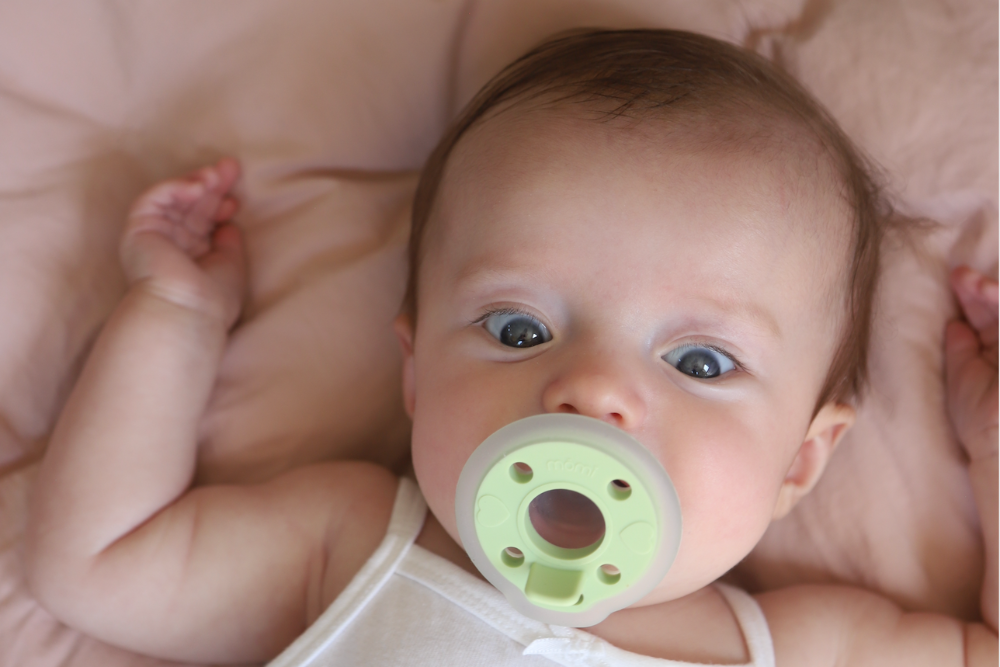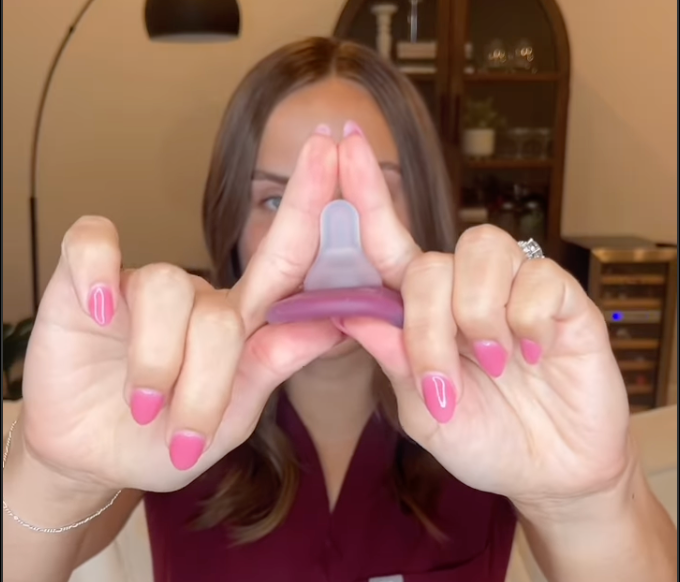Pacifiers are a tool that can calm a crying baby, soothe their sucking impulse, and grant a new mother’s body some much-needed rest. But timing is everything. If offered too early, even the best pacifiers for breastfeeding newborns can affect latch, mask hunger cues, and interfere with milk supply.
when to introduce a pacifier
What constitutes “too early?” Research recommends waiting until breastfeeding is well established, typically around the first four weeks of life. Once a baby has cleared specific feeding milestones a pacifier can be used effectively in the correct circumstances to avoid “nipple confusion” and reduced feeding frequency.
To introduce a pacifier to a newborn successfully:
- Make sure your baby is calm and not hungry.
- Wait until breastfeeding is consistent and your milk supply is stable.
- Choose pacifiers shaped like a breast or with a naturally sloped design to mimic nursing.
- Gently place the tip on your baby’s lower lip or tongue to trigger the sucking reflex.
- If baby refuses, try another model, or dip the tip in expressed breast milk or formula for familiarity.
Avoid forcing a pacifier, and remember it should never replace feedings.
what does a pediatrician say about pacifiers?
Dr. Meg Alden, a pediatrician in Winston-Salem, explains her stance on using pacifiers when breastfeeding:
“Ideally babies should not use a pacifier until breastfeeding is established. The AAP advises waiting 3-4 weeks. When a breastfeeding mom is choosing a pacifier, IBCLCs recommend choosing one that looks like the maternal nipple to reduce the risk of nipple confusion.
Pacifier use should never interfere with feedings. Baby should be going to breast 8-12 times a day, in the beginning, to help stimulate milk production and to provide adequate nutrition. Pacifiers shouldn’t be given in place of a feeding if a baby is showing hunger cues.
If a mom is having breastfeeding issues or the baby isn’t gaining weight, I wouldn’t recommend a pacifier during that time. Parents should also watch for signs of wear and tear on the pacifier and never use a clip/strap when baby isn’t monitored.”
Introducing a pacifier too early can interfere with learning how to suck correctly at the breast and mask important hunger cues.
In summary:
- Keeping breastfeeding sessions at 8–12 feeds per day.
- Avoiding pacifier use during cluster feeding or growth spurts.
- Never offering a pacifier in place of a feeding if baby shows hunger cues.
sucking is an essential involuntary newborn reflex
If you touch a newborn baby’s cheek or mouth, they will move their head from side to side until their mouth finds that stimulation. This reflex is called “rooting.” It is involuntary, meaning a baby is born knowing how to do it and they do not need to learn this behavior.
The rooting reflex allows a newborn to find their mother’s breast and then extract milk through sucking. Sucking is also a biological involuntary reflex that begins even before birth. Babies suck their thumbs in the womb! The sucking reflex can be broken down into two parts.
Expression
When baby places their lips around a breast, draws the nipple into their mouth and uses their tongue and hard palette to compress the nipple and extract milk.
When baby moves their tongue from the areola of the breast to the nipple and back again in a rhythmic pattern.
Learning this rhythm of expression and sucking calls for coordination. It can take practice. Some newborns drink readily at the breast right away, while others need time to learn how to suck and express milk efficiently.
This is one reason the American Academy of Pediatrics advises parents to wait to introduce pacifiers until after breastfeeding is well-established. They put this milestone at approximately 3 to 4 weeks of age. Babies need to practice the sucking motion and associate that coordination with getting fed.
Another reason? Pacifiers may hinder a parent’s ability to detect early hunger cues.
early pacifier introduction masks hunger cues
early pacifier introduction masks hunger cues
Newborns need to eat frequently, often every 2–3 hours. Introducing pacifiers before four weeks can hide hunger cues.
Hunger cues include:
- smacking or sucking sounds
- opening their mouth or sticking out their tongue
- rooting their head from side to side
- putting their hands to their mouth
All of the above cues are subdued with a pacifier. All of the above cues are subdued with a pacifier. When hunger signals are missed, babies may not get enough calories, and a mother’s milk supply can drop due to reduced demand.
pacifiers could impact a mother’s milk supply
Milk is made on a supply and demand basis. Skipping feeds because a pacifier was used instead of nursing tells the body to slow down production. Research shows frequent pacifier use is associated with shorter breastfeeding duration and fewer feeds overall.
“Pacifier use was associated with fewer feeds and shorter suckling duration per 24 hours, shorter duration of exclusive breastfeeding, and shorter total breastfeeding duration compared with no pacifier use. These associations were not found for thumb sucking. The possible negative effects of pacifiers on breastfeeding seemed to be related to the frequency of their use. Maternal age and education only slightly modified the association between pacifier use and breastfeeding duration.
More frequent use of a pacifier was associated with shorter breastfeeding duration, even among a group of mothers who were highly motivated to breastfeed. breastfeeding duration, breastfeeding pattern, exclusive breastfeeding, pacifier use, thumb sucking.”
“Exclusive breastfeeding at 4 weeks was less likely among infants exposed to pacifiers (early pacifier group; odds ratio: 1.5; 95% confidence interval: 1.0–2.0). Early (2-5 days), as compared with late (>4 weeks), pacifier use shortened overall duration (adjusted hazard ratio: 1.22; 95% confidence interval: 1.03–1.44) but did not affect exclusive or full duration.”
If your primary goal is to continue a long-term breastfeeding relationship, hold off on introducing a pacifier until after your milk supply is well established.
pacifiers are okay when introduced following the neonatal period
We have established that the main reason to abstain from using a pacifier early on is because it can detract from learning how to suck correctly, mask hunger cues and limit the number of times a breastfeeding mom brings baby to breast.
But once a baby and mother are in a healthy, sustainable pattern and a baby’s weight is gaining steadily, pacifiers have benefits to both mother and baby:
- They can reduce nipple pain by giving babies an alternative outlet for comfort sucking.
- They may protect against Sudden Infant Death Syndrome (SIDS) when used during sleep.
feeling sore? a pacifier can also help with nipple pain
Some babies desire to nurse for comfort outside of feeding and this can lead to painful, sore, and bleeding nipples. Ouch!
“As a pediatrician and a mom, I know well the scream of a baby just wanting to suck. It can be unnerving to new parents. I always worry when early-stage nursing moms allow baby to nurse around the clock. There is a high risk of nipple trauma that could derail nursing altogether! I advise parents to use a pacifier for those babies who very much want to suck for calm and comfort between the 8-12 nursing sessions episodically to help soothe baby and lower mom’s stress about feedings. In the end, the most important thing is fed babies and sane moms.”
In this instance, a pacifier is a good tool to keep a baby comfortable and bring relief to a mother’s body. Just ensure that baby is maintaining all nursing sessions and gaining weight.
What else can I do to heal nipple trauma?
- First, ensure that baby is latching correctly. An incorrect latch is painful and the main culprit of continued nipple pain.
- Use a nipple cream or balm in between nursing sessions. (Pro tip! Pack this in the hospital bag and use it in between every feed as a proactive measure against nipple trauma in the early days.)
- Keep a drop of milk on nipples after nursing. Breast milk contains anti-inflammatory agents and acts as a natural barrier. Just make sure breasts are completely dry before covering up.
- Avoid trapped moisture in a bra, and change breast pads frequently when they are wet.
pacifiers can reduce the risk of SIDS at bedtime
Studies have shown that pacifiers can reduce the risk of SIDS (Sudden Infant Death Syndrome) when used at bedtime.
“Published case-control studies demonstrate a significantly reduced risk of SIDS with pacifier use, particularly when placed for sleep. Encouraging pacifier use is likely to be beneficial on a population-wide basis: 1 SIDS death could be prevented for every 2733 (95% CI: 2416-3334) infants who use a pacifier when placed for sleep (number needed to treat), based on the US SIDS rate and the last-sleep multivariate SOR resulting from this analysis. Therefore, we recommend that pacifiers be offered to infants as a potential method to reduce the risk of SIDS.”
how to use a pacifier correctly when breastfeeding
- Find a pacifier that mirrors a maternal nipple shape like the mōmi babypace® pacifier.
- Limit pacifier use to between feedings.
- Pause the use of a pacifier when baby is cluster-feeding or going through a growth spurt.
- Never attach a pacifier to a baby’s clothing when sleeping or unsupervised.
- Offer a pacifier during sleep to reduce the risk of SIDS.
- Keep an eye on a baby’s hands when they are sucking on a pacifier. A hungry infant may be clenching their fists as a non-oral hunger cue.
- If baby develops issues with breastfeeding or latch, consider discontinuing pacifier use or consulting with an IBCLC.
- Inspect pacifiers regularly to make sure the silicon is not breaking down. Replace any pacifiers that look worn or torn.
from soothing to safe sleep: choosing the right pacifier matters
The journey to introducing a pacifier does not need to be stressful. By waiting until breastfeeding is established, picking pacifiers shaped like a breast, and using them intentionally, you can give your baby the comfort they crave while protecting your feeding relationship.
If you’re ready to try a pacifier that supports healthy development and mirrors the natural feel of nursing, explore mōmi’s breast-like pacifiers. Thoughtfully designed with medical-grade silicone, they’re trusted by parents who want both soothing and science on their side.



